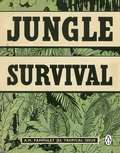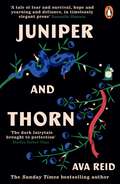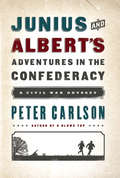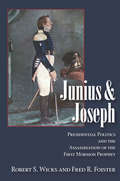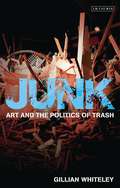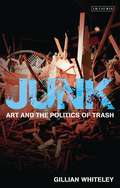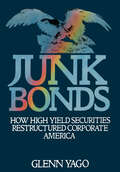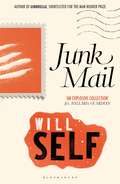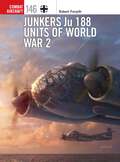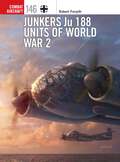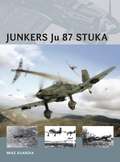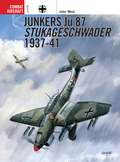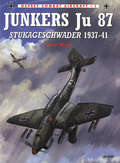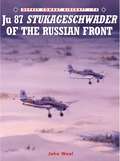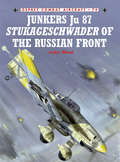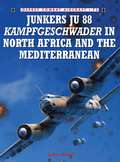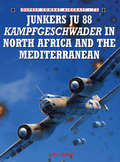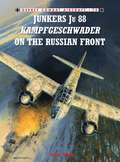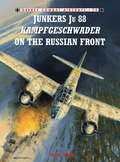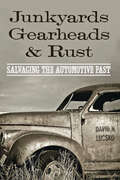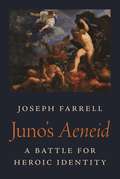- Table View
- List View
Jungle Survival (Air Ministry Survival Guide)
by A.M. Pamphlet 224THE ULTIMATE SURVIVAL GUIDE for anyone who thinks they'd survive the world's most hostile environments - or at least imagine they could do.-----------------------------First issued to airmen in the 1950s, the Air Ministry's Sea Survival guide includes original and authentic emergency advice to crew operating over the ocean. With original illustrations and text, these survival guides provide an insight to military survival techniques from a by-gone era.Packed with original line drawings and instruction in:- What to do if 'jungle hiking becomes boring'- How to stay safe from poisonous reptiles and insects- The benefits of using a 'fire thong'Focussing on one of the most hostile environments on Earth, Jungle Survival is one of four reprints of The Air Ministry's emergency survival pamphlets. Others include:Sea SurvivalDesert SurvivalArctic Survival
Jung's Nietzsche: Zarathustra, The Red Book, and “Visionary” Works
by Gaia DomeniciThis book explores C.G. Jung's complex relationship with Friedrich Nietzsche through the lens of the so-called 'visionary' literary tradition. The book connects Jung's experience of the posthumously published Liber Novus (The Red Book) with his own (mis)understanding of Nietzsche's Zarathustra, and formulates the hypothesis of Jung considering Zarathustra as Nietzsche's Liber Novus –– both works being regarded by Jung as 'visionary' experiences. After exploring some 'visionary' authors often compared by Jung to Nietzsche (Goethe, Hölderlin, Spitteler, F. T. Vischer), the book focuses upon Nietzsche and Jung exclusively. It analyses stylistic similarities, as well as explicit references to Nietzsche and Zarathustra in Liber Novus, drawing on Jung's annotations in his own copy of Zarathustra. The book then uses Liber Novus as a prism to contextualize and understand Jung's five-year seminar on Zarathustra: all the nuances of Jung's interpretation of Zarathustra can be fully explained, only when compared with Liber Novus and its symbology. One of the main topics of the book concerns the figure of 'Christ' and Nietzsche's and Jung's understandings of the 'death of God.'
The Junior Officers' Reading Club: Killing Time and Fighting Wars
by Patrick HennesseyFor the first time in a generation British soldiers are once again fighting at close quarters, coming under sustained and vicious firepower, losing friends in some of the most violent fighting the modern army has endured. Yet the same soldiers also serve on international peacekeeping missions, or counter insurgency. Sometimes they do all three in the same country. The Junior Officers' Reading Club is the story of how one of these soldiers was made, through the testosterone-heavy breeding ground of Sandhurst, into the war-pockmarked, gritty Balkans, out into the nightmare of Iraq and Afghanistan's Helmand Province, pinned down by the Taliban, living only from moment to moment. Written in spare and lucid prose, it describes with alarming vividness not only the frenetic violence of a soldier's life, but the periods of stifling and (sometimes) comic boredom, living inside an institution in a state of flux, an Army caught between a world that needs it and a society that no longer understands it.
Juniper & Thorn: The Sunday Times bestseller
by Ava Reid''A tale of fear and survival, hope and yearning and defiance, in timelessly elegant prose. It will enchant you, break your heart, and chill you to the very marrow.' Samantha Shannon on The Wolf and the WoodsmanFrom the Sunday Times bestselling author of The Wolf and the Woodsman comes a gothic retelling of The Juniper Tree, where a young witch seeks to discover her identity and escape the domination of her abusive wizard father. Perfect for fans of Angela Carter, Catherynne M. Valente and Shirley Jackson_________________________________A gruesome curse. A city in upheaval. A monster with unquenchable appetites.Marlinchen and her sisters are the last true witches in a city shifting from magic to industry. Viewed as little more than tourist traps, they spend their days treating clients with archaic remedies and nostalgic charm, while attempting to placate their tyrannical, xenophobic wizard father, who keeps his daughters locked away in their crumbling home.But at night, they sneak out to revel in the city's thrills, particularly the recently established ballet theatre, where Marlinchen meets a dancer who quickly captures her heart. But as their late-night trysts grow more fervent and frequent, so does the threat of her father's rage. And while their city flourishes, a monster lurks in its midst, borne of intolerance and resentment and suffused with old-world power.Sunday Times bestseller, June 2022 (w/c 27th June 2022)
Junius and Albert's Adventures in the Confederacy: A Civil War Odyssey
by Peter CarlsonJunius Browne and Albert Richardson covered the Civil War for the New York Tribune until Confederates captured them as they tried to sneak past Vicksburg on a hay barge. Shuffled from one Rebel prison to another, they escaped and trekked across the snow-covered Appalachians with the help of slaves and pro-Union bushwhackers. Their amazing, long-forgotten odyssey is one of the great escape stories in American history, packed with drama, courage, horrors and heroics, plus moments of antic comedy.On their long, strange adventure, Junius and Albert encountered an astonishing variety of American characters-Abraham Lincoln and Ulysses S. Grant, Rebel con men and Union spies, a Confederate pirate-turned-playwright, a sadistic hangman nicknamed "the Anti-Christ,” a secret society called the Heroes of America, a Union guerrilla convinced that God protected him from Confederate bullets, and a mysterious teenage girl who rode to their rescue at just the right moment.Peter Carlson, author of the critically acclaimed K Blows Top, has, in Junius and Albert's Adventures in the Confederacy, written a gripping story about the lifesaving power of friendship and a surreal voyage through the bloody battlefields, dark prisons, and cold mountains of the Civil War.
Junius And Joseph: Presidential Politics and the Assassination of the First Mormon Prophet
by Robert Wicks Fred R. Foister"Junius and Joseph examines Joseph Smith's nearly forgotten [1844] presidential bid, the events leading up to his assassination on June 27, 1844, and the tangled aftermath of the tragic incident. It... establishes that Joseph Smith's murder, rather than being the deadly outcome of a spontaneous mob uprising, was in fact a carefully planned military-style execution. It is now possible to identify many of the key individuals engaged in planning his assassination as well as those who took part in the assault on Carthage jail. And furthermore, this study presents incontrovertible evidence that the effort to remove the Mormon leader from power and influence extended well beyond Hancock County [Illinois] (and included prominent Whig politicians as well as the Democratic governor of the state), thereby transforming his death from an impulsive act by local vigilantes into a political assassination sanctioned by some of the most powerful men in Illinois. The circumstances surrounding Joseph Smith's death also serve to highlight the often unrecognized truth that a full understanding of early Mormon history can be gained only when considered in the context of events taking place in American society as a whole."
Junk: Art and the Politics of Trash
by Gillian WhiteleyTrash, garbage, rubbish, dross, and detritus - in this enjoyably radical exploration of 'Junk', Gillian Whiteley rethinks art's historical and present appropriation of junk within our eco-conscious and globalised culture. She does this through an illustrated exploration of particular materials, key moments and locations and the telling of a panoply of trash narratives. Found and ephemeral materials are primarily associated with assemblage - object-based practices which emerged in the mid-1950s and culminated in the seminal exhibition 'The Art of Assemblage' in New York in 1961. With its deployment of the discarded and the filthy, Whiteley argues, assemblage has been viewed as a disruptive, transgressive artform that engaged with narratives of social and political dissent, often in the face of modernist condemnation as worthless kitsch. In the Sixties, parallel techniques flourished in Western Europe, the US and Australia but the idiom of assemblage and the re-use of found materials and objects - with artist as bricoleur - is just as prevalent now. This is a timely book that uncovers the etymology of waste and the cultures of disposability within these economies of wealth.
Junk: Art and the Politics of Trash
by Gillian WhiteleyTrash, garbage, rubbish, dross, detritus - in this radical exploration of Junk, Gillian Whiteley rethinks art's historical and present appropriation of junk within our eco-conscious and globalised culture. She does this through an illustrated exploration of particular materials, key moments and locations and the telling of a panoply of trash narratives.Found and ephemeral materials are primarily associated with assemblage - object-based practices which emerged in the mid-1950s and culminated in the seminal exhibition The Art of Assemblage in New York in 1961. With its deployment of the discarded and the filthy, Whiteley argues, assemblage has been viewed as a disruptive, transgressive artform that engaged with narratives of social and political dissent, often in the face of modernist condemnation as worthless kitsch. In the Sixties, parallel techniques flourished in Western Europe, the US and Australia but the idiom of assemblage and the re-use of found materials and objects - with artist as bricoleur - is just as prevalent now. This is a timely book that uncovers the etymology of waste and the cultures of disposability within these economies of wealth.
Junk Bonds: How High Yield Securities Restructured Corporate America
by Glenn YagoJunk bonds burst into the nation's headlines as the fastest growing and most controversial financial instruments of the 1980s. Branded with an unflattering nickname, these high yield securities were tarnished in the public eye by waves of negative publicity. Critics cast the financiers and entrepreneurs who pioneered their use as symbols of a decade of greed and financial excess. By the end of the 1980s, the heyday of junk bonds had seemingly come to a close with the conviction of junk bond pioneer Michael Milken and the bankruptcy of Drexel Burnham Lambert, the brokerage that dominated the high yield market. But the controversy surrounding junk bonds continues. Now, in Junk Bonds, business professor Glenn Yago turns the tables on conventional wisdom about this new financial technology. He offers the first systematic examination of the facts about high yield securities. His analysis provides hard evidence that demystifies junk bonds and explodes many of the popular myths that surround them. Junk Bonds sheds light on the role of high yield financing in what Yago calls the democratization of capital. Before the advent of junk bonds, only companies with an "investment grade" rating--five percent of the 23,000 American companies with sales over $35 million--had access to long term capital. In effect, the author argues, 95 percent of American companies were denied the means to finance growth and business development. Yago shows how junk bonds changed all that, breathing life into thousands of American companies that had been shunned by the capital markets. His research demonstrates that these "junk" companies outperformed many Fortune 500 firms in job creation, product development, sales, and business innovation. The real contribution of junk bonds, according to Yago, was to improve the productivity and competitiveness of American business by restructuring companies in the wake of the corporate conglomerations of the 1960s and 1970s. His findings show that divestitures by companies financed with high yield bonds were not necessarily destructive. Many sold-off units flourished as independent enterprises at a time when numerous "investment grade" companies stagnated or closed plants or fired workers. This restructuring of corporate America has enabled businesses to compete in a changing international environment, benefiting managers, workers, stockholders, and investors alike. Junk Bonds provides readers with a scholarly analysis that shears away the hype and hysteria that often accompany rapid change. And at a time when Wall Street is under greater scrutiny than at any time since the Depression, this provocative study provides a timely and thoughtful contribution to the debate surrounding junk bonds.
Junk Mail: Reissued
by Will SelfEverything that makes Will Self's fiction so arresting and original is in evidence here in this collection of his best articles, book reviews and interviews from the Observer, the Guardian, the Independent, the Evening Standard and many more. Whether describing penis operations, narcotics or merely pondering the nature of slacking, these pieces are as witty and acerbic as one would expect from one of our foremost contemporary satirists.
Junkers Ju 188 Units of World War 2 (Combat Aircraft)
by Robert ForsythThis volume examines the history and development of the Ju 188 twin-engined aircraft, the Luftwaffe's attempt to enhance and improve its peerless Ju 88.The Junkers Ju 188 was the epitome of mid-war German twin-engined aircraft design, representing the enhancement of an earlier type and incorporating increased performance and technological sophistication. As part of the 1939 'Bomber B' programme, it was intended as a replacement for the Ju 88 and He 111 medium bombers, taking advantage of uprated Jumo and BMW engines and incorporating a radically redesigned cockpit area with all-round visibility for high-speed bombing, torpedo-bomber carrying, FuG 200 radar, and camera-equipped reconnaissance operations. What emerged, from the autumn of 1943, was a sophisticated bomber and reconnaissance aircraft–and intended nightfighter. After operational trials, the Ju 188 equipped three bomber Geschwader and several long-range reconnaissance Staffeln in the East and Italy, conducting operations over Britain and the Western Front as well as Russia and the Mediterranean.This comprehensive study charts the design, development, and deployment of an advanced aircraft which was ultimately overshadowed by improvements to the aeroplane it was designed to replace. Supported by specially commissioned illustrations and contemporary photography, this is the essential guide to the Junkers Ju 188.
Junkers Ju 188 Units of World War 2 (Combat Aircraft)
by Robert ForsythThis volume examines the history and development of the Ju 188 twin-engined aircraft, the Luftwaffe's attempt to enhance and improve its peerless Ju 88.The Junkers Ju 188 was the epitome of mid-war German twin-engined aircraft design, representing the enhancement of an earlier type and incorporating increased performance and technological sophistication. As part of the 1939 'Bomber B' programme, it was intended as a replacement for the Ju 88 and He 111 medium bombers, taking advantage of uprated Jumo and BMW engines and incorporating a radically redesigned cockpit area with all-round visibility for high-speed bombing, torpedo-bomber carrying, FuG 200 radar, and camera-equipped reconnaissance operations. What emerged, from the autumn of 1943, was a sophisticated bomber and reconnaissance aircraft–and intended nightfighter. After operational trials, the Ju 188 equipped three bomber Geschwader and several long-range reconnaissance Staffeln in the East and Italy, conducting operations over Britain and the Western Front as well as Russia and the Mediterranean.This comprehensive study charts the design, development, and deployment of an advanced aircraft which was ultimately overshadowed by improvements to the aeroplane it was designed to replace. Supported by specially commissioned illustrations and contemporary photography, this is the essential guide to the Junkers Ju 188.
Junkers Ju 87 Stuka (Air Vanguard)
by Henry Morshead Adam Tooby Mike GuardiaIn the opening days of the Blitzkrieg campaign, few aircraft could invoke as much terror as the Junkers Ju 87. Nicknamed the “Stuka” (an abbreviation of Sturzkampfflugzeug – the German term for “dive-bomber”), the Ju 87 was perhaps the most feared tactical bomber of the ETO. With its fixed landing gear and inverted gull wings, the Stuka was the most recognizable aircraft of the Blitzkrieg era. With profile plates, close-up photographs and battlescene artwork, this book reveals the design and development history of the aircraft and how the inclusion of its dive-activated siren changed it from a reliable and sturdy dive bomber into a psychological weapon, spreading panic in ground units. Mike Guardia goes on to explain how the Stuka became easy prey for Allied aircraft and how its influence waned in the final years of the war.
Junkers Ju 87 Stuka (Air Vanguard)
by Adam Tooby Mike Guardia Mr Henry MorsheadIn the opening days of the Blitzkrieg campaign, few aircraft could invoke as much terror as the Junkers Ju 87. Nicknamed the "Stuka†? (an abbreviation of Sturzkampfflugzeug – the German term for "dive-bomber†?), the Ju 87 was perhaps the most feared tactical bomber of the ETO. With its fixed landing gear and inverted gull wings, the Stuka was the most recognizable aircraft of the Blitzkrieg era. With profile plates, close-up photographs and battlescene artwork, this book reveals the design and development history of the aircraft and how the inclusion of its dive-activated siren changed it from a reliable and sturdy dive bomber into a psychological weapon, spreading panic in ground units. Mike Guardia goes on to explain how the Stuka became easy prey for Allied aircraft and how its influence waned in the final years of the war.
Junkers Ju 87 Stukageschwader 1937–41 (Combat Aircraft)
by Mike Chappell John Weal Mark StylingThe Ju 87 Stuka was the most feared weapon in the German arsenal in the first year of World War 2, the Luftwaffe using it to deadly effect during the Blitzkrieg between September 1939 and June 1940. Although vulnerable to the enemy fighters due to its moderate speed in level flight and general lack of manoeuvrability, the Ju 87 nevertheless soon came to symbolise the might of Nazi Germany as the mere handful of Stukageschwader supporting the Wehrmacht rampaging out of the Fatherland took a heavy toll of the Allied forces.
Junkers Ju 87 Stukageschwader 1937–41: Stukageschwader, 1937-41 (Combat Aircraft #1)
by Mike Chappell John Weal Mark StylingThe Ju 87 Stuka was the most feared weapon in the German arsenal in the first year of World War 2, the Luftwaffe using it to deadly effect during the Blitzkrieg between September 1939 and June 1940. Although vulnerable to the enemy fighters due to its moderate speed in level flight and general lack of manoeuvrability, the Ju 87 nevertheless soon came to symbolise the might of Nazi Germany as the mere handful of Stukageschwader supporting the Wehrmacht rampaging out of the Fatherland took a heavy toll of the Allied forces.
Junkers Ju 87 Stukageschwader of the Russian Front (Combat Aircraft)
by John WealThis final volume of the Osprey trilogy on the Luftwaffe dive-bomber charts its fortunes in the toughest theatre of all: the Eastern Front. Written by John Weal, a leading authority on the Luftwaffe, this book examines how, following its comprehensive defeat over the English Channel in the summer of 1940, the Stuka was able to restore its fearsome reputation over the Eastern Front.
Junkers Ju 87 Stukageschwader of the Russian Front (Combat Aircraft #74)
by John WealThis final volume of the Osprey trilogy on the Luftwaffe dive-bomber charts its fortunes in the toughest theatre of all: the Eastern Front. Written by John Weal, a leading authority on the Luftwaffe, this book examines how, following its comprehensive defeat over the English Channel in the summer of 1940, the Stuka was able to restore its fearsome reputation over the Eastern Front.
Junkers Ju 88 Kampfgeschwader in North Africa and the Mediterranean (Combat Aircraft)
by John WealThis volume follows the Luftwaffe's twin-engined 'Wunderbomber' southwards to describe its deployment in North Africa and the Mediterranean theatre of war. Early 1941 saw the first sporadic air raids on Malta, followed by the campaign in the Balkans which resulted in the conquests of Yugoslavia, Greece and Crete. After supporting land operations in North Africa during the latter half of 1941, the Ju 88s resumed their assault on Malta. Bringing the story to life are personal accounts of the more famous actions – the bombing of shipping off the coast of Greece and the sinking of three Royal Navy destroyers south of Crete, all illustrated with rare photographs and full-colour profiles.
Junkers Ju 88 Kampfgeschwader in North Africa and the Mediterranean (Combat Aircraft)
by John WealThis volume follows the Luftwaffe's twin-engined 'Wunderbomber' southwards to describe its deployment in North Africa and the Mediterranean theatre of war. Early 1941 saw the first sporadic air raids on Malta, followed by the campaign in the Balkans which resulted in the conquests of Yugoslavia, Greece and Crete. After supporting land operations in North Africa during the latter half of 1941, the Ju 88s resumed their assault on Malta. Bringing the story to life are personal accounts of the more famous actions – the bombing of shipping off the coast of Greece and the sinking of three Royal Navy destroyers south of Crete, all illustrated with rare photographs and full-colour profiles.
Junkers Ju 88 Kampfgeschwader on the Russian Front (Combat Aircraft)
by John WealThe Ju 88, "Wunderbomber†? was the main punch of the Luftwaffe's bomber arm during the initial invasion of the Soviet Union and went on to provide critical ground support to the advancing Wehrmacht. This book tells the complete story of the Ju 88's activities on the Eastern Front including their participation in the campaign against the arctic convoys and the several variants employed. Written and illustrated by renowned Luftwaffe expert John Weal, this book completes Osprey's trilogy on one of the most important German aircraft of World War II.
Junkers Ju 88 Kampfgeschwader on the Russian Front (Combat Aircraft #79)
by John WealThe Ju 88, "Wunderbomber†? was the main punch of the Luftwaffe's bomber arm during the initial invasion of the Soviet Union and went on to provide critical ground support to the advancing Wehrmacht. This book tells the complete story of the Ju 88's activities on the Eastern Front including their participation in the campaign against the arctic convoys and the several variants employed. Written and illustrated by renowned Luftwaffe expert John Weal, this book completes Osprey's trilogy on one of the most important German aircraft of World War II.
Junkyards, Gearheads, and Rust: Salvaging the Automotive Past
by David N. LucskoWhat happens to automobiles after they are retired but before they are processed as scrap? In this fascinating history, David N. Lucsko takes readers on a tour of salvage yards and wrecked or otherwise out-of-service cars in the United States from the point of view of gearheads;¢;‚¬;€?the hot rodders, restoration hobbyists, street rodders, and classic car devotees who reuse, repurpose, and restore junked cars.Junkyards, Gearheads, and Rust is a nuanced exploration of the business of dismantling wrecks and selling second-hand parts. It examines the reinterpretation of these cars and parts by artists as well as their restoration by enthusiasts. It also surveys the origin and evolution of gearhead-oriented yards that specialize in specific types of automobiles; dissects the material and emotional appeal of the salvage yard and its contents among enthusiasts; and examines how zoning and nuisance ordinances have affected both salvage businesses and hobbyists. Lucsko concludes with an analysis of efforts during the last twenty-five years to hasten vehicular obsolescence at the expense of salvage yards, mechanics, and enthusiasts. By examining how cars are salvaged, repurposed, and restored, this book demonstrates that the history of the automobile is much more than a running catalog of showroom novelties.
Junkyards, Gearheads, and Rust: Salvaging the Automotive Past
by David N. LucskoWhat happens to automobiles after they are retired but before they are processed as scrap? In this fascinating history, David N. Lucsko takes readers on a tour of salvage yards and wrecked or otherwise out-of-service cars in the United States from the point of view of gearheads;¢;‚¬;€?the hot rodders, restoration hobbyists, street rodders, and classic car devotees who reuse, repurpose, and restore junked cars.Junkyards, Gearheads, and Rust is a nuanced exploration of the business of dismantling wrecks and selling second-hand parts. It examines the reinterpretation of these cars and parts by artists as well as their restoration by enthusiasts. It also surveys the origin and evolution of gearhead-oriented yards that specialize in specific types of automobiles; dissects the material and emotional appeal of the salvage yard and its contents among enthusiasts; and examines how zoning and nuisance ordinances have affected both salvage businesses and hobbyists. Lucsko concludes with an analysis of efforts during the last twenty-five years to hasten vehicular obsolescence at the expense of salvage yards, mechanics, and enthusiasts. By examining how cars are salvaged, repurposed, and restored, this book demonstrates that the history of the automobile is much more than a running catalog of showroom novelties.
Juno's Aeneid: A Battle for Heroic Identity (Martin Classical Lectures #36)
by Joseph FarrellA major new interpretation of Vergil's epic poem as a struggle between two incompatible versions of the Homeric heroThis compelling book offers an entirely new way of understanding the Aeneid. Many scholars regard Vergil's poem as an attempt to combine Homer’s Iliad and Odyssey into a single epic. Joseph Farrell challenges this view, revealing how the Aeneid stages an epic contest to determine which kind of story it will tell—and what kind of hero Aeneas will be.Farrell shows how this contest is provoked by the transgressive goddess Juno, who challenges Vergil for the soul of his hero and poem. Her goal is to transform the poem into an Iliad of continuous Trojan persecution instead of an Odyssey of successful homecoming. Farrell discusses how ancient critics considered the flexible Odysseus the model of a good leader but censured the hero of the Iliad, the intransigent Achilles, as a bad one. He describes how the battle over which kind of leader Aeneas will prove to be continues throughout the poem, and explores how this struggle reflects in very different ways on the ethical legitimacy of Rome’s emperor, Caesar Augustus.By reframing the Aeneid in this way, Farrell demonstrates how the purpose of the poem is to confront the reader with an urgent decision between incompatible possibilities and provoke uncertainty about whether the poem is a celebration of Augustus or a melancholy reflection on the discontents of a troubled age.
